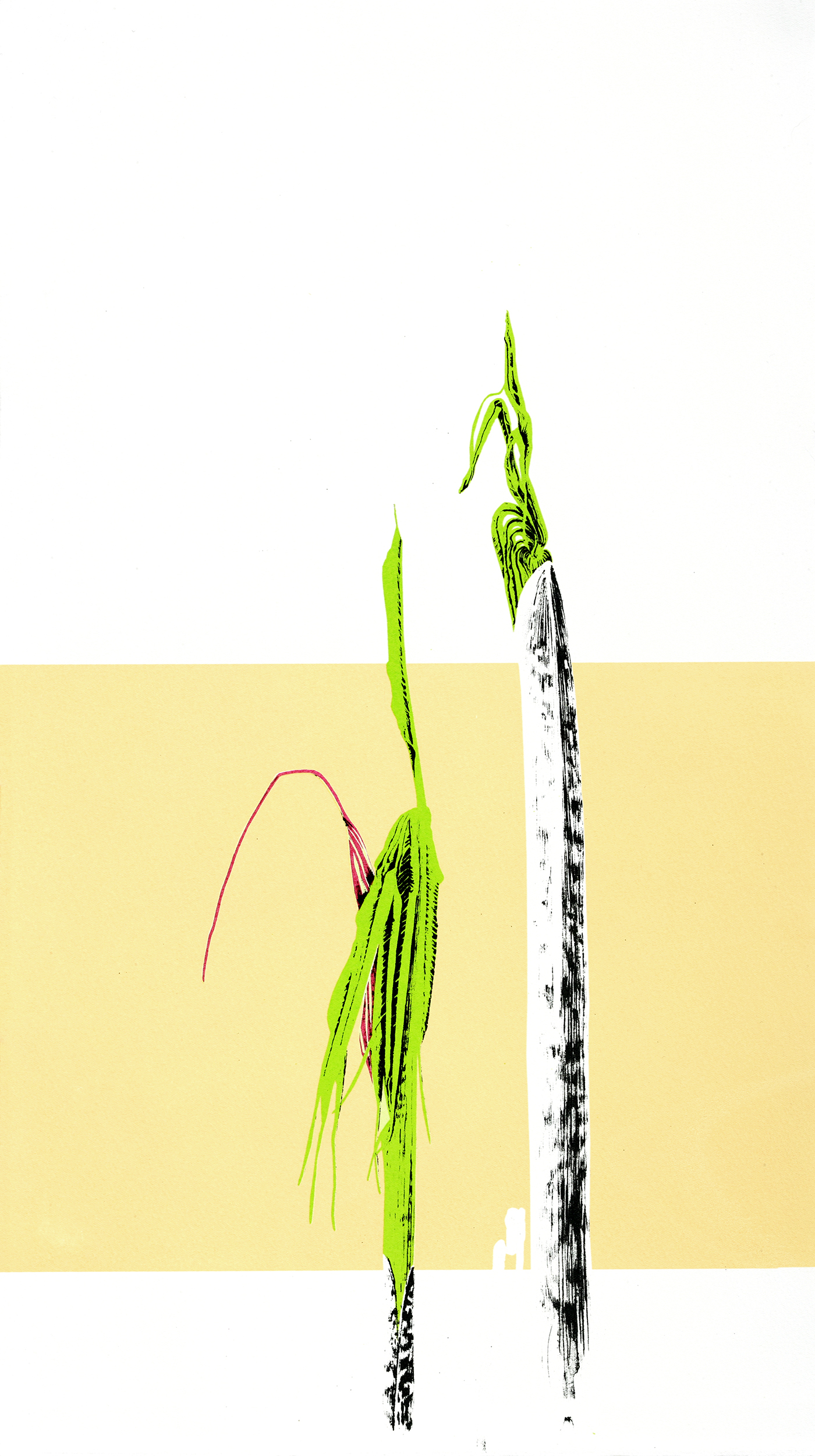Arisaema consanguineum with geometric styling
Screen print on Somerset cartridge, no.1of 6 float mounted on charcoal board, framed in dark grey/black (SOLD)
50cm x 29.7cm
Limited edition run of 6, 4 available unframed – £440, 1 framed £575
Available from the shop unframed >>
An original screen print of Arisaema consanguineum.
This is a four colour screen print. I love the distinction of the flower here, through the deep pink against the brilliant green folded leaflets.
Botanical details
Common name: Consanguineous Cobra Lily. Consanguinity in animals means blood relation. In plants it could refer to inbreeding occurring naturally in the form of self-pollination. Section Sinarisaema Nakai Type: A. formosanum (Hayata) Hayata
A. consanguineum is the most widespread species throughout Asia. Gusman (2006) notes that the wide distribution has resulted in a variety of growing conditions and with multiple variations, from a diminutive 15cm high on the peak of Wanfo Ding (near Shaping, Sichuan, China) at 3099m, to a tall form (possibly up to 2m) in the same region but at a lower altitude of 750m. Growing conditions noted are rocky crags, meadows, along roadsides in stony clay, along footpaths, at forest edges, in shrubbery, along rivers, and beneath Torreyra grandis and hazel trees in amongst iris and ferns. There are also variegated and unvariegated, making them an attractive choice as foliage plants.
Deciduous, to 1.8m tall and 60cm wide, distribution through N India, Nepal, Bhutan, China, N Thailand, N Myanmar, Vietnam and possibly in Laos. Forests, shrubbery and open slopes, amongst rocks 1000 – 3000m. Flowering period May to July, ripening September to November.
“The Genus Arisaema, A Monograph for Botanist and Nature Lovers“, Guy and Liliane Gusman, 2006, A.R.G. Gantner Verlag K.G. “Himalayan Cobra-lilies (Arisaema) Their Botany and Culture”, Udai C. Pradhan, 1990, Primulaceae Books, Himalayan Plant Journal, Kalimpong-734301, Darjeeling, Gorka Hill Council, West Bengal, India.
© Marianne Hazlewood




